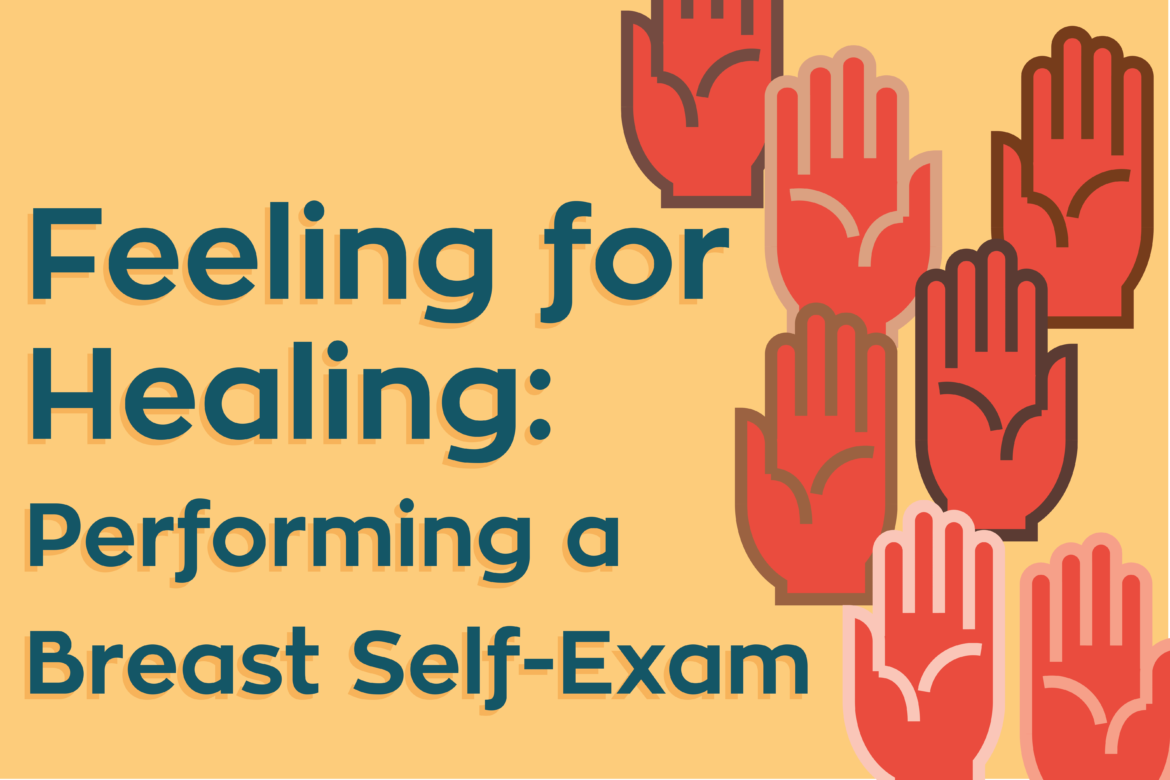A breast self-exam is an important practice and a powerful free way to take your health into your own hands. This practice may lead to detecting breast cancer in its early stages, when it is more likely to be successfully treated.
Why Self-Exam?
Developing a habit of self-examination will help you become more familiar with how your breasts regularly look and feel. The more familiar you are with how your breasts regularly look and feel, the easier it is to notice when something’s different. Breast cancer is not always discovered through self-exams and there are many conditions that can cause changes to the breast. However, many women report that the first noticeable indication of breast cancer was a breast lump they discovered on their own.
How It’s Done
Typically your breasts are least sensitive or tender the week after your period, making it a great time to self-examine with minimal discomfort. Doctors generally recommend three different methods to examining your own breasts. Doctors advise using these all three different types of inspection to gain a comprehensive understanding of the condition of your breasts.
In the Mirror
Visually inspect your breasts in the mirror to see if they are their normal shape, size, color, and symmetry. Raise your arms over head and press your palms together to flex your chest muscles. Look for any dimpling, puckering, swelling in your breasts or inversions of the nipple. If you notice any of these irregularities or any redness or soreness, let your doctor know right away.
Standing up or Sitting down
Using your fingertips, move around your breast in a circular pattern from the outside to the center. Most women find this is easiest to do in the shower when the skin is wet and fingers can slide easily over the skin. Feel for any thickening, lumps, or hardened knots using different levels of pressure. Make sure to examine the whole area of borth breasts, including under your armpits and around your collarbone.
Lying Down
You can also examine your breasts while lying flat on your back. With your right arm above your head, examine your right breast with your left hand using the same method mentioned above. Repeat these steps for the left breast.
Results
A breast self-exam is one of the best ways to take your health into your own hands, get familiar with the condition of your breasts, and be proactive in looking for any kind of abnormalities. If you find a lump, don’t panic. Most lumps turn out to be non-cancerous. If you do happen to notice any changes or abnormalities in your breasts, it is always a good idea to consult with your doctor for potential further screening such as a mammogram or tomosynthesis.
To make an appointment with the UVA Breast Care Center, call (434) 924-1555. For more info, visit UVA Breast Care Center.




